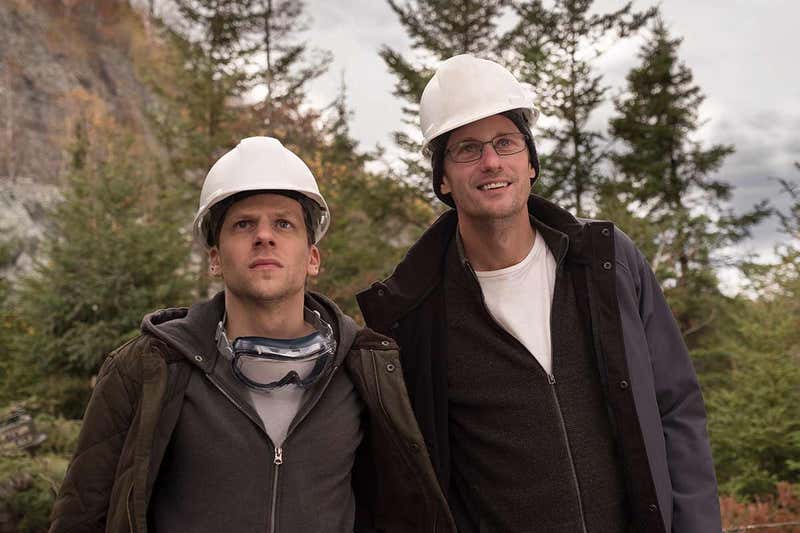
IT IS 2011, a couple of years after the Great Recession. Quantitative analyst Vincent (Jesse Eisenberg) and his programmer cousin Anton (Alexander Skarsgård) have found a way to steal a march on Wall Street: trading a millisecond ahead of the competition.
Where will they find this tiny, telling pinch of extra time? They plan to make it themselves, by stretching an optical fibre from Kansas City Internet Exchange to New York in as straight a line as possible. While everyone else waits 17 milliseconds for their information (the beat of a hummingbird’s wing is the film’s poetic, and accurate enough, conceit), Vincent, Anton and their backers will only have to wait 16 milliseconds. That’s time enough to squeeze in a few thousand algorithmically generated trades.
The trick will be to lay the cable as straight as the law allows. Never mind Amish farms, Appalachian mountain ranges, loneliness, obsession or physical frailty. They will build this thousand-mile long, 4-inch wide fibre tunnel if it kills them.
Scripted and filmed like a true-life story (after all, who in their right mind would make up a thriller about high-frequency trading infrastructures?) The Hummingbird Project, incredibly, springs entirely from the head of writer-director Kim Nguyen. It can’t quite decide whether to be a think piece or a buddy movie, but it can be staggeringly funny. Salma Hayek has indecent amounts of fun as Eva, the cousins’ abandoned boss.“I think we can break the walls of perception together!” she screams at one point, in a frantic attempt to keep them on her payroll.
It is one of those stories that, in being made up, encapsulates a lot of historical and technical insight. Hayek’s Eva can talk “nanosecond financial engineering” all she wants. As a sceptical investor notes, her style of trading is really just scalping: profiting off small, short-lived price anomalies between financial exchanges.
Scalping is hard because one hefty loss wipes out millions of tiny profitable trades. And it is also impossible to do without computers because markets adjust quicker than the eye can follow.
When world markets crashed in 2008, this strategy took a lot of the heat. It was easier for politicians to point the finger at runaway tech and artificially accelerated trading than to challenge and dismantle key institutions. But while trading algorithms have caused the odd “flash crash”, they do far more to sustain a market economy than to threaten it. This is why so-called mechanical arbitrage runs over half the trades in many markets.
Vincent and Anton’s project is entirely reasonable in a world that puts commercial operations as close to market exchanges as possible to steal millisecond advantages over competitors. Hanging over the cousins’ project is a rival bid to leave fibre behind and send financial information by microwave (and the discussion of “pulse-shaping algorithms” will warm the heart of any telecoms engineer). Today, the industry is even more complex, with atomic clocks to arbitrate the timing of financial information. Financial instruments that scalp multiple markets are driving the creation of strategic data centres in unlikely places, as banks head for space via Elon Musk’s Starlink servers.
All of which gives the film a curiously nostalgic feel. Do you recall when it took a thousandth of a second to win or lose a fortune? What slowcoaches we were, eight years ago.
